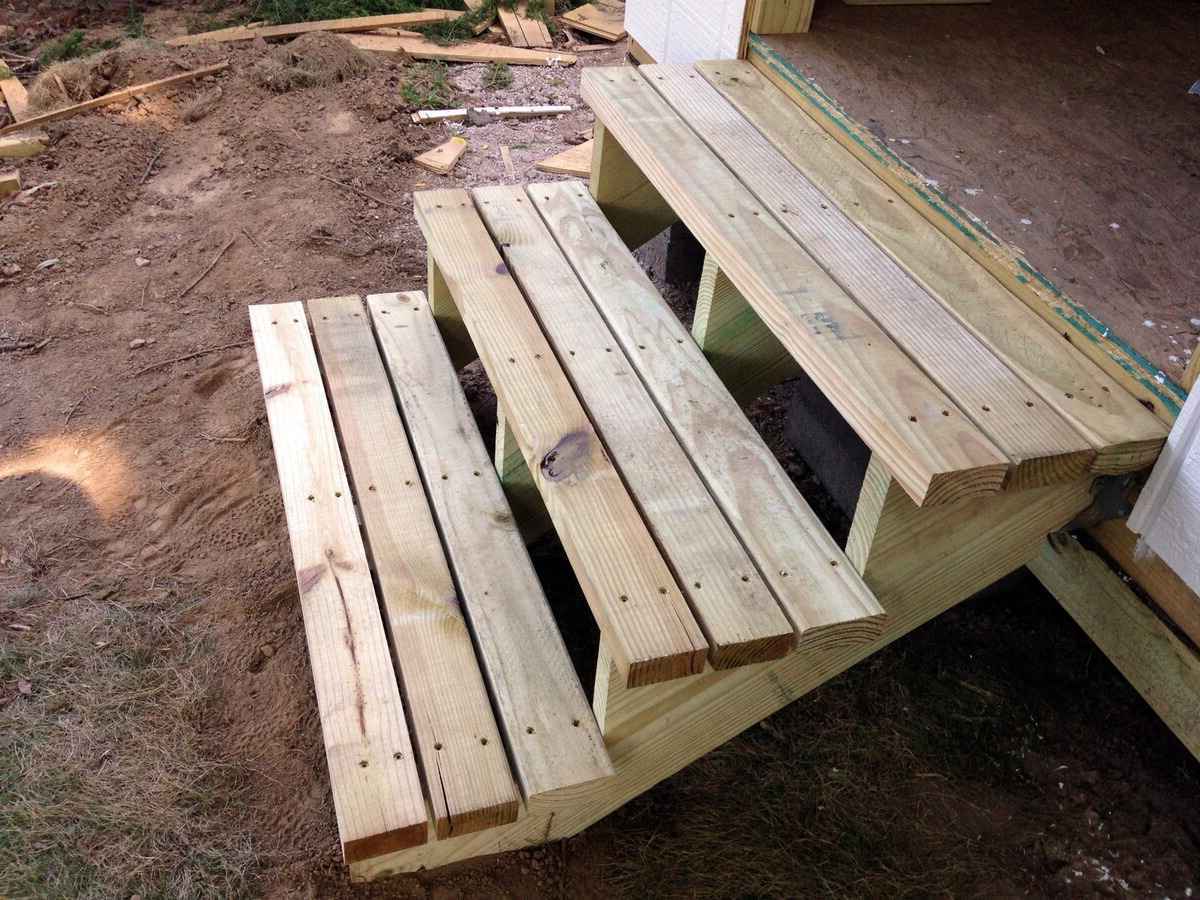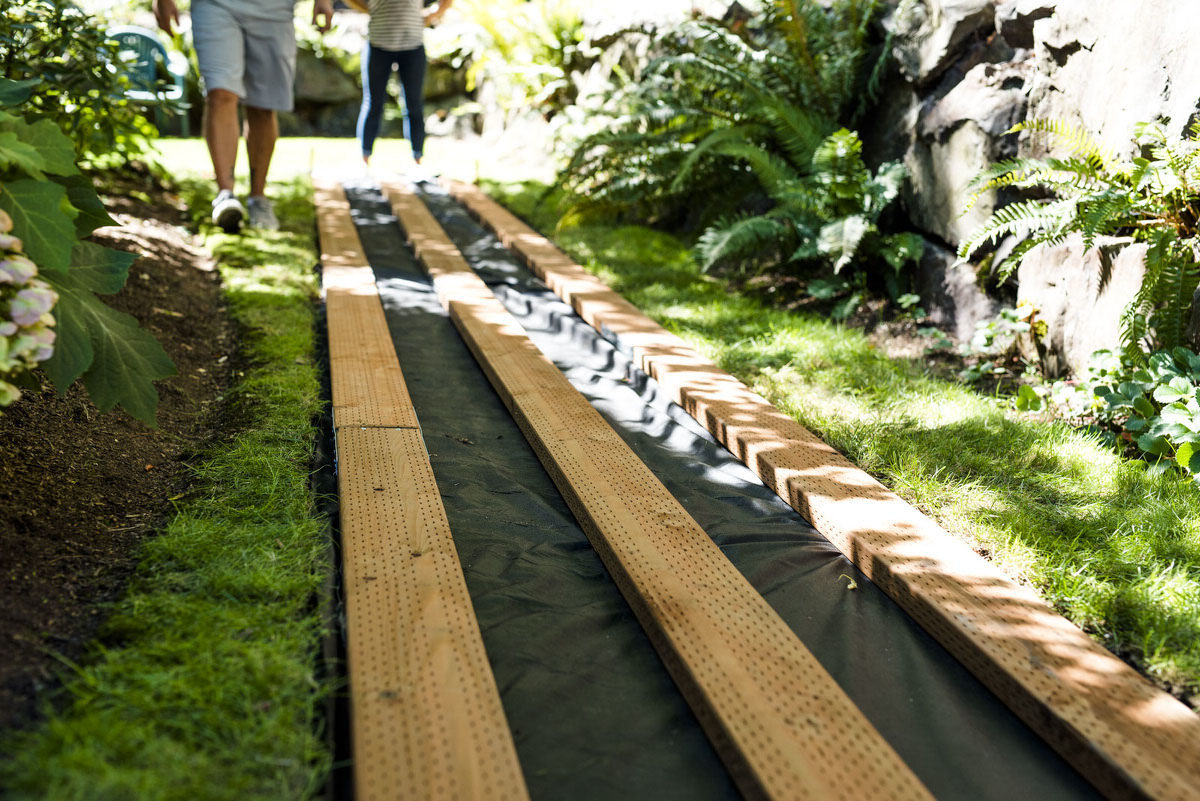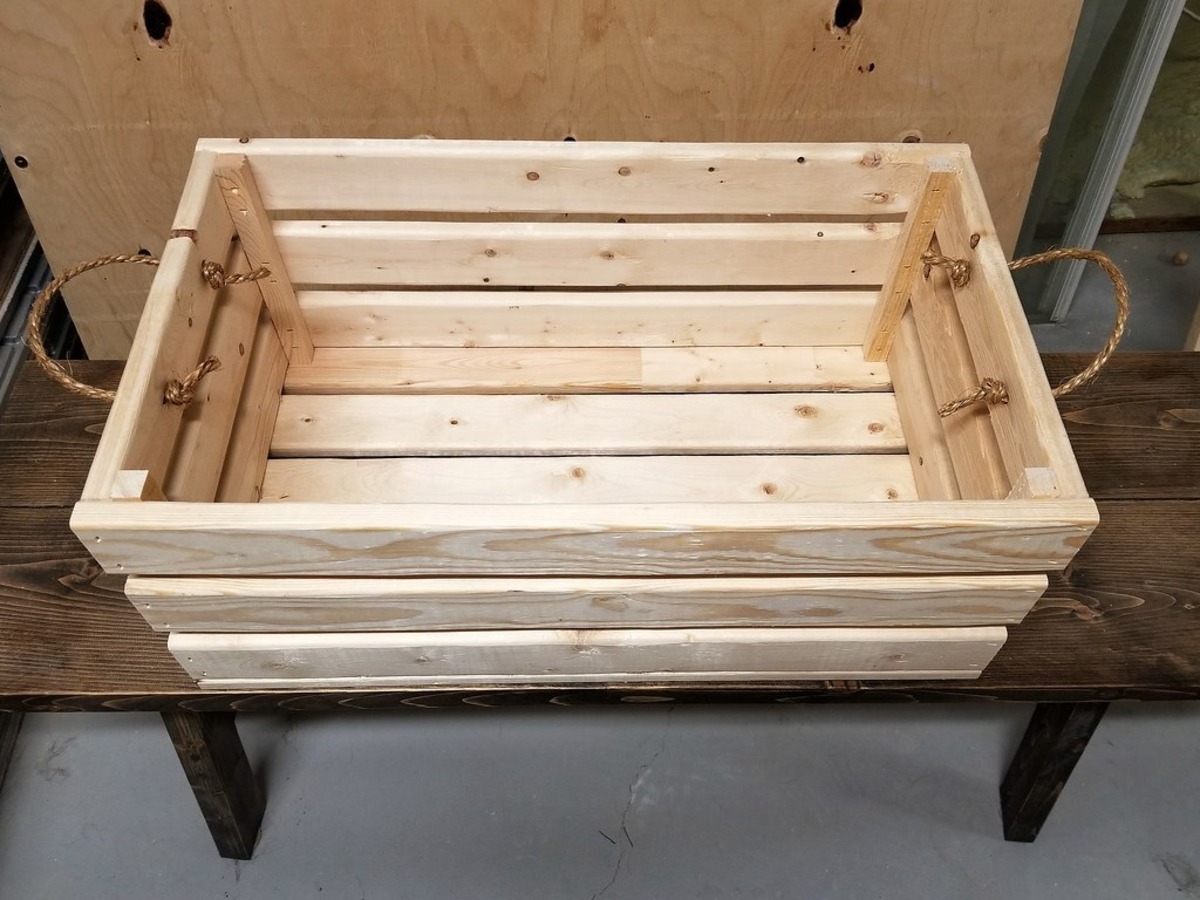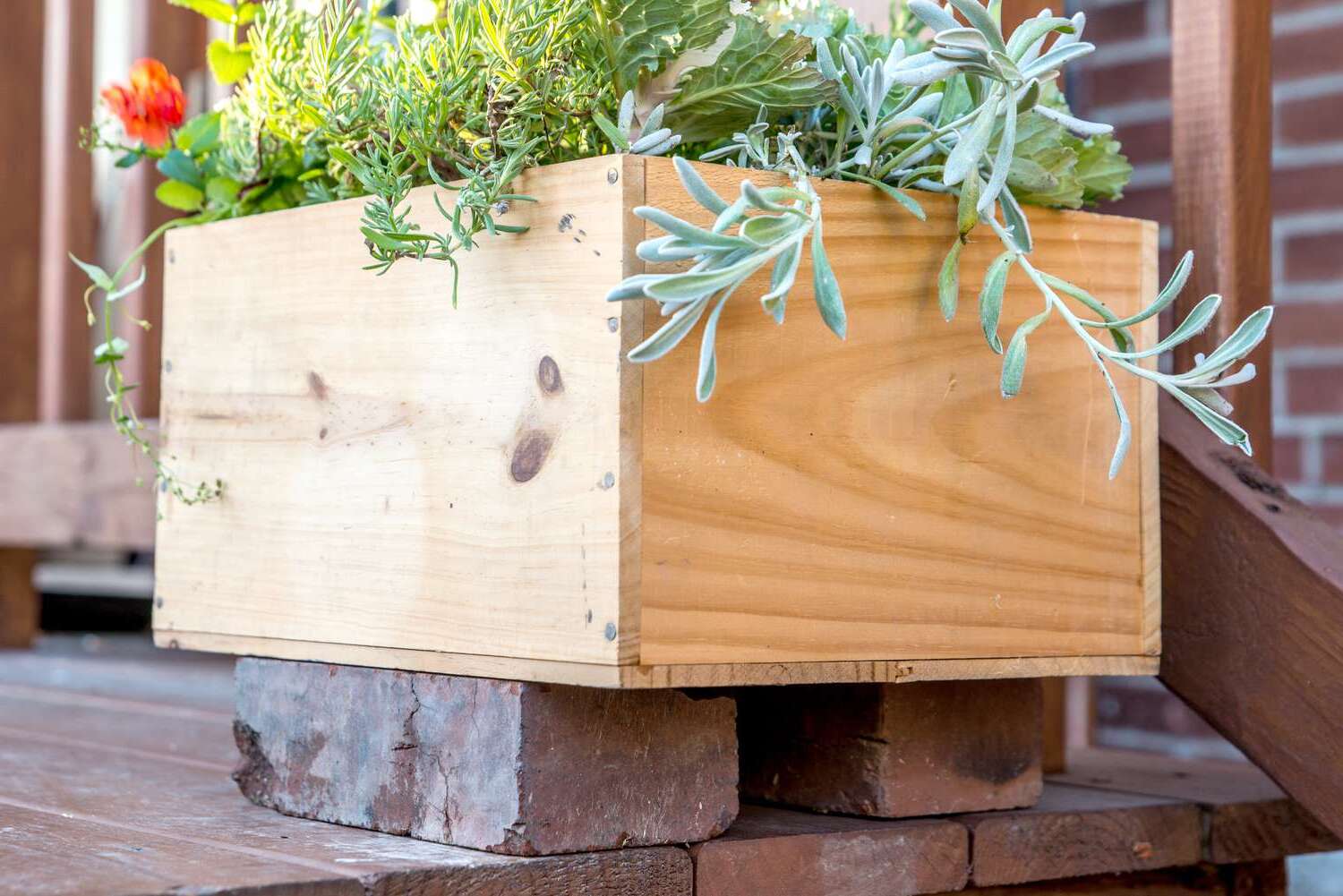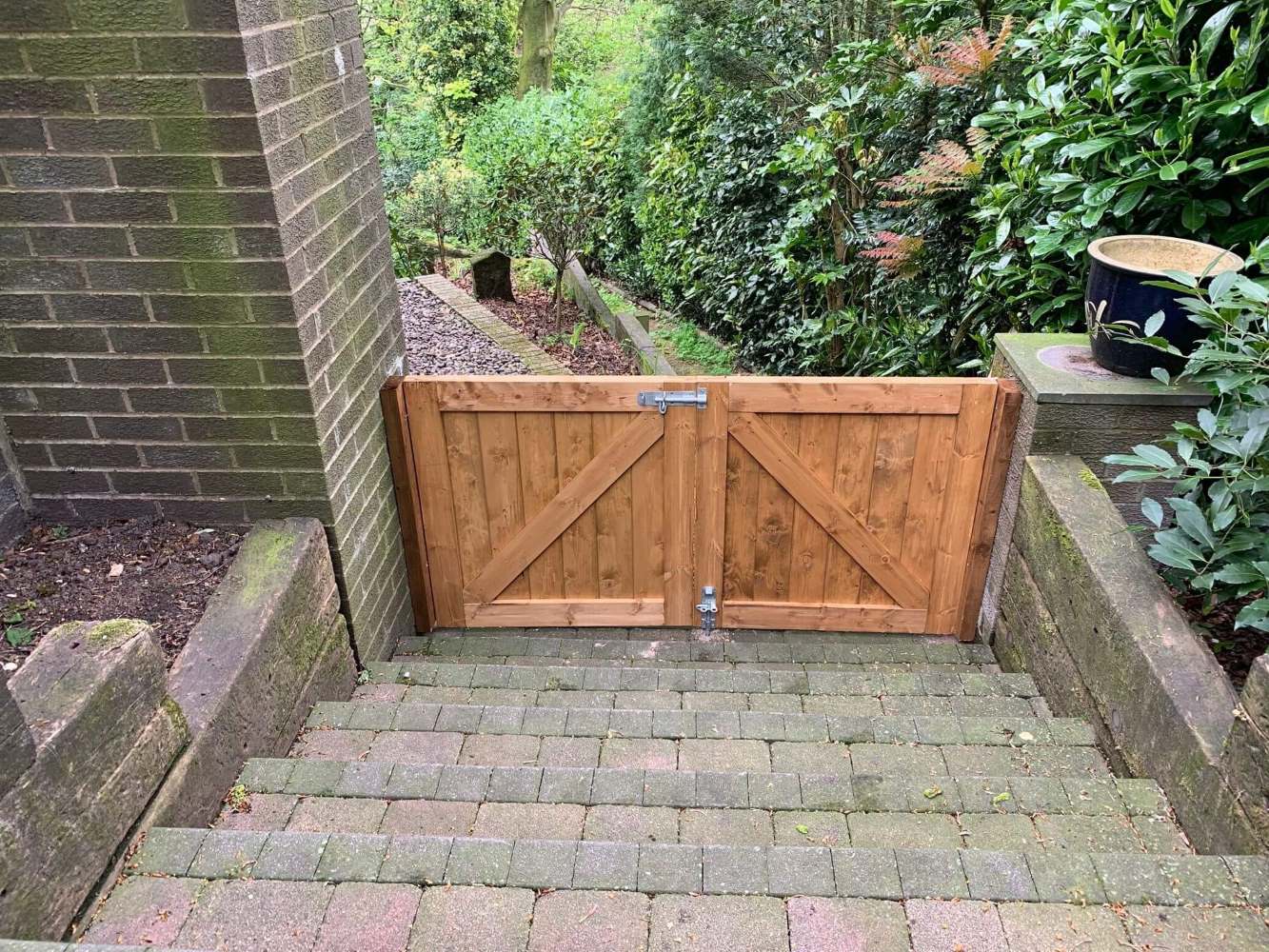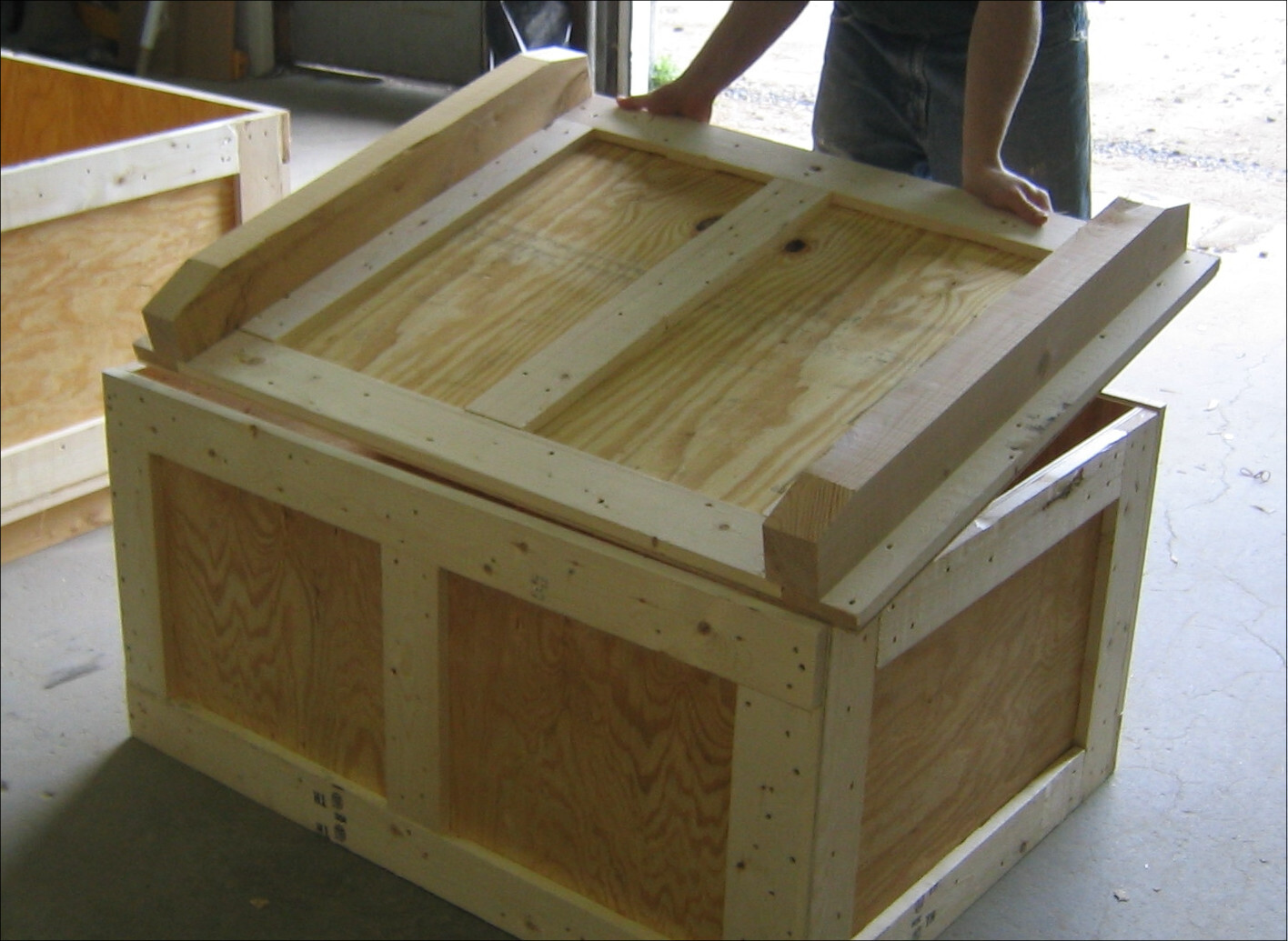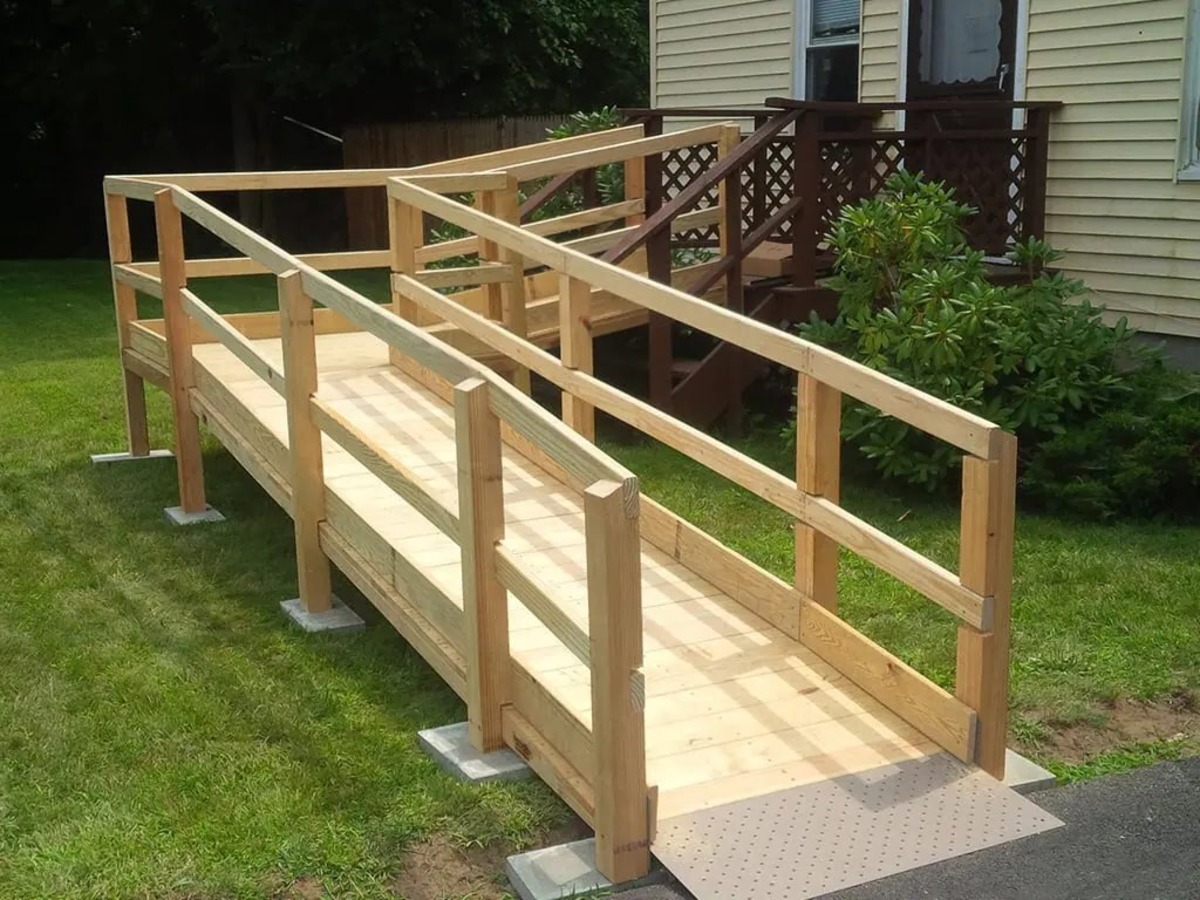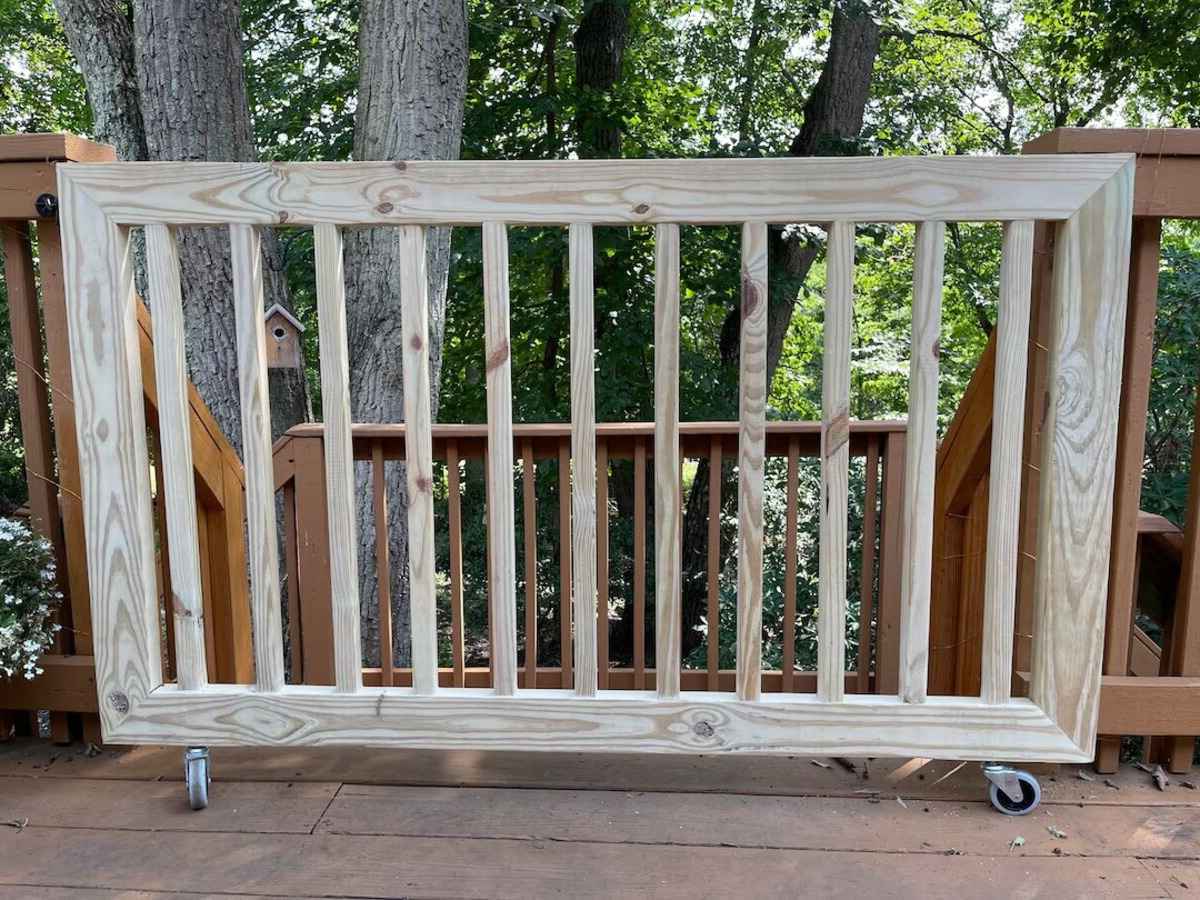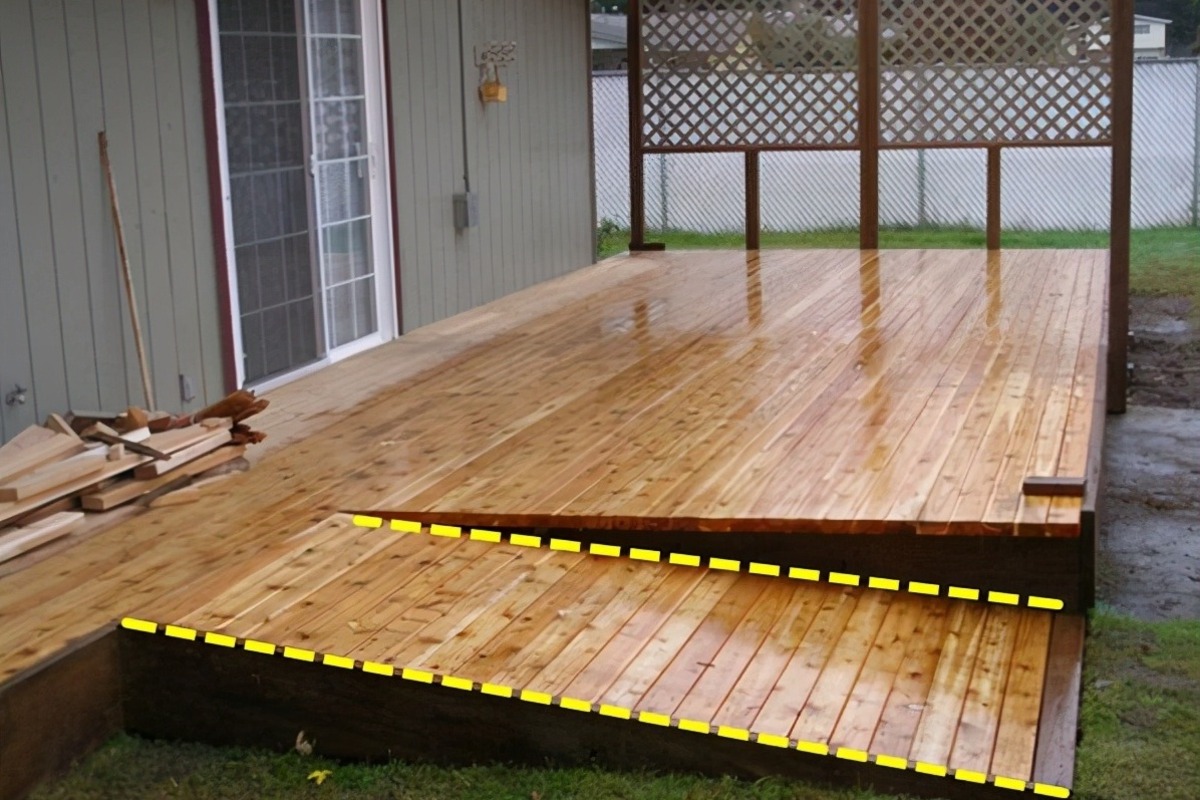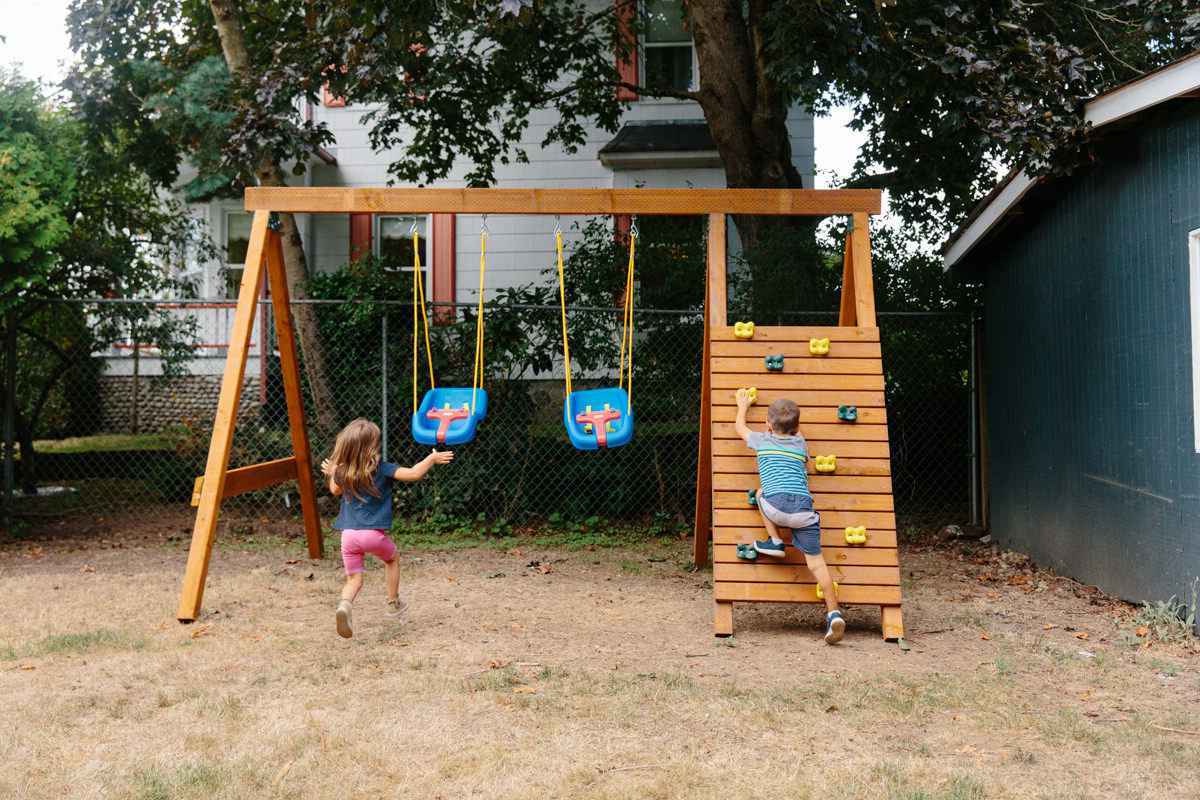Home>Knowledge & Skills>Wood & Metal Working>How To Build A Wooden Gate
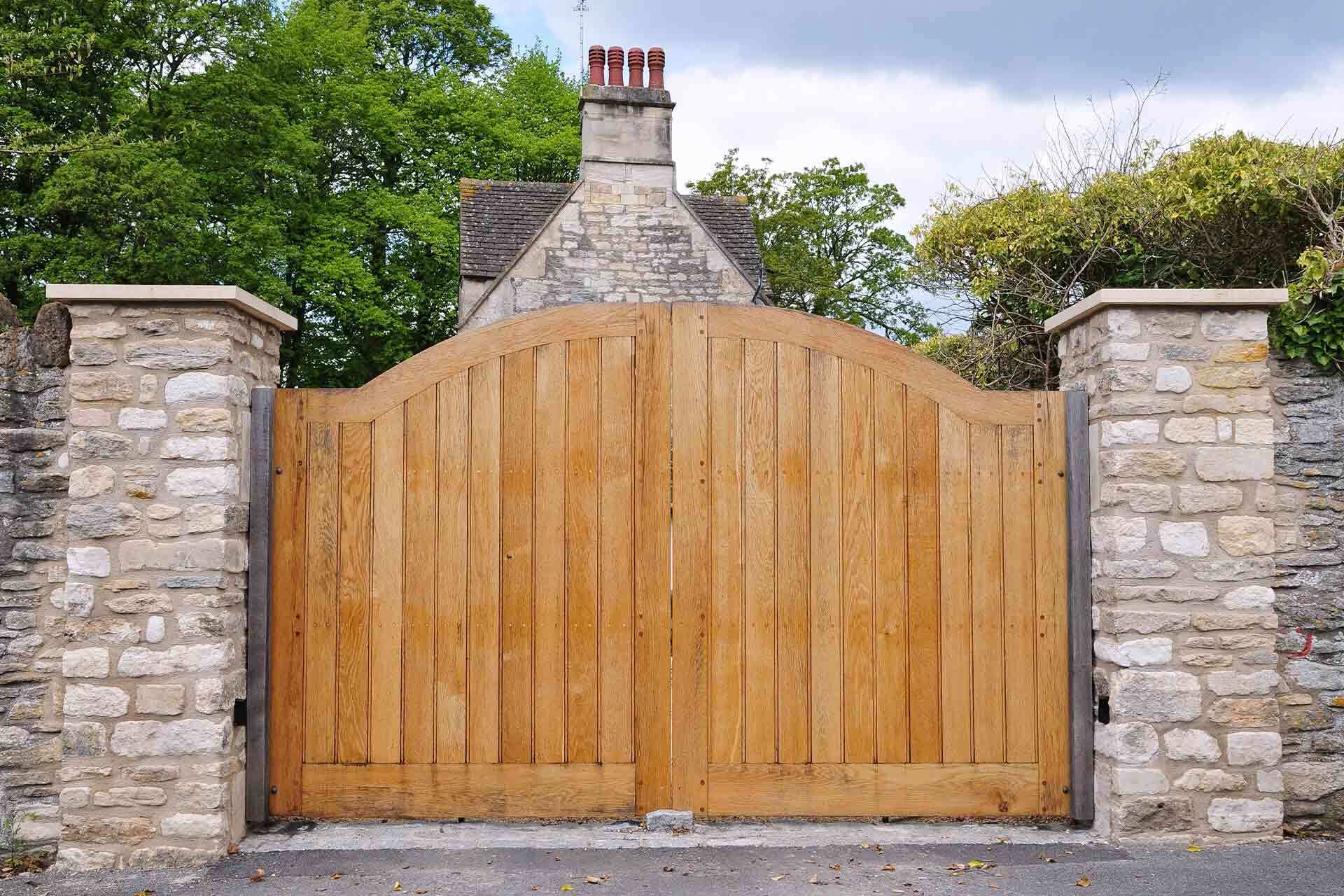

Wood & Metal Working
How To Build A Wooden Gate
Published: March 6, 2024

Our Editor-in-Chief brings a fresh perspective with his expertise in modern home technologies and eco-friendly solutions. Philip bridges tradition with innovation across a wide range of DIY topics.
Learn how to build a sturdy wooden gate with our expert wood and metal working tips. Create a durable and stylish gate for your property today!
(Many of the links in this article redirect to a specific reviewed product. Your purchase of these products through affiliate links helps to generate commission for Twigandthistle.com, at no extra cost. Learn more)
Introduction
Building a wooden gate can be a rewarding and practical project for woodworking enthusiasts and homeowners alike. Whether you're looking to enhance the aesthetic appeal of your property, increase privacy, or secure a specific area, a well-crafted wooden gate can serve as a functional and visually appealing addition to your home or garden.
In this comprehensive guide, we will walk you through the step-by-step process of constructing a sturdy and attractive wooden gate. From gathering the necessary materials and tools to the final installation, you'll gain valuable insights and practical tips to help you successfully complete this woodworking project.
By following these instructions, you'll have the opportunity to unleash your creativity and woodworking skills while adding a personal touch to your property. Whether you're a seasoned woodworker or a DIY enthusiast eager to embark on a new project, building a wooden gate provides an excellent opportunity to hone your craftsmanship and create a lasting and functional piece that complements your outdoor space.
So, roll up your sleeves, gather your tools, and let's dive into the rewarding journey of crafting a beautiful and durable wooden gate that will stand the test of time.
Read more: How To Build A Gate
Step 1: Gather Materials and Tools
Before diving into the construction of your wooden gate, it's essential to gather all the necessary materials and tools to ensure a smooth and efficient building process. Here's a comprehensive list of items you'll need:
Materials:
- Wood: Select high-quality lumber for the frame and pickets. Opt for durable wood species such as cedar, redwood, or pressure-treated pine to ensure longevity and resistance to outdoor elements.
- Gate Hardware: This includes hinges, a latch, and screws. Choose heavy-duty hardware designed for outdoor use to withstand the weight and constant operation of the gate.
- Wood Glue: A reliable wood adhesive will reinforce joints and enhance the gate's structural integrity.
- Galvanized Screws or Nails: These will be used for securing the wooden components together, providing a strong and lasting bond.
- Finishing Materials: Depending on your preference, you may need paint, stain, or sealant to protect the wood from moisture, UV rays, and other environmental factors.
Tools:
- Measuring Tape: Accurate measurements are crucial for ensuring the gate fits perfectly within the designated space.
- Circular Saw or Miter Saw: These tools will be used to cut the wood to the required dimensions with precision.
- Drill and Bits: Essential for pre-drilling holes and driving screws into the wood.
- Level: Ensures that the gate is installed evenly and plumb.
- Clamps: Useful for holding wood pieces together during assembly.
- Safety Gear: Don't forget safety glasses, ear protection, and dust masks to safeguard yourself during the woodworking process.
By gathering these materials and tools, you'll set the stage for a successful wooden gate construction project. With everything at your disposal, you'll be well-prepared to move on to the next step: measuring and cutting the wood.
Step 2: Measure and Cut the Wood
Accurate measurements and precise cuts are fundamental to the construction of a well-built wooden gate. Before picking up your saw, take the time to measure the designated gate opening carefully. Use a reliable measuring tape to record the width and height, ensuring that your gate will fit perfectly within the space.
Once you have the exact measurements, it's time to transfer them to the selected wood. Remember to account for the width of the gate hardware and any desired gaps between pickets during this process. Use a pencil and a straight edge to mark the cut lines clearly, ensuring that each piece is tailored to the specific dimensions required for the gate's frame and pickets.
When it comes to cutting the wood, precision is key. Whether you're using a circular saw or a miter saw, ensure that the cutting blade is set to the appropriate angle and depth to achieve clean and accurate cuts. Take your time and exercise caution to maintain straight lines and consistent dimensions across all pieces of wood.
For the frame components, such as the top and bottom rails, as well as the vertical stiles, ensure that each piece is cut to the exact length and width specified by your measurements. These components form the structural foundation of the gate, so their accuracy is paramount to the gate's overall stability and functionality.
Similarly, when cutting the pickets, pay attention to achieving uniformity in their dimensions. Consistent picket size and spacing contribute to the gate's visual appeal and structural integrity. Take care to align the pickets evenly, as this will enhance the gate's aesthetic appeal and ensure a professional finish.
As you complete the cutting process, organize the wood pieces according to their respective roles in the gate assembly. Labeling the components can help streamline the assembly process and prevent confusion during construction. With the wood accurately measured and cut, you're now ready to move on to the next step: assembling the frame.
By meticulously measuring and cutting the wood, you lay the groundwork for a well-constructed wooden gate that not only fits seamlessly within its designated space but also exudes craftsmanship and attention to detail.
Read more: How To Build A Fence Gate
Step 3: Assemble the Frame
With the wood pieces accurately measured and cut, it's time to embark on the pivotal stage of assembling the frame for your wooden gate. The frame serves as the backbone of the gate, providing structural support and stability. Follow these steps to ensure a seamless and sturdy assembly process:
1. Lay Out the Components
Begin by laying out the top and bottom rails, as well as the vertical stiles, in the designated assembly area. Arrange the pieces in the correct orientation, ensuring that the ends are aligned flush and the overall frame dimensions match the intended gate size.
2. Create the Frame Structure
Apply a thin, even layer of high-quality wood glue along the ends of the vertical stiles that will join with the top and bottom rails. Carefully position the stiles between the rails, forming the rectangular frame structure of the gate. Use a carpenter's square to verify that the corners are perfectly square, adjusting the pieces if necessary.
3. Secure the Joints
Once the frame components are aligned, use clamps to hold the pieces firmly together. Pre-drill pilot holes through the stiles into the rails to prevent splitting, then drive galvanized screws through the pilot holes to secure the joints. Ensure that the screws are driven in flush with the wood surface to maintain a smooth and even finish.
Read more: How To Build A Chain Link Gate
4. Reinforce the Joints
To further reinforce the frame, consider adding additional screws at regular intervals along the length of the joints. This extra reinforcement enhances the overall strength and durability of the frame, ensuring that it can withstand the rigors of daily use and outdoor conditions.
5. Check for Alignment and Stability
After securing the joints, carefully inspect the assembled frame to confirm that it is square and stable. Use a level to check for any potential twists or unevenness in the structure. Making any necessary adjustments at this stage will contribute to the gate's proper functionality and professional appearance.
6. Allow for Proper Drying Time
Once the frame is fully assembled and inspected, allow the wood glue to cure as per the manufacturer's recommendations. This curing period is crucial for ensuring that the joints achieve maximum strength and integrity before proceeding to the next phase of the construction process.
By meticulously following these steps to assemble the frame, you'll establish a solid foundation for your wooden gate. A well-constructed frame not only contributes to the gate's overall strength and stability but also sets the stage for the seamless addition of pickets and the installation of gate hardware in the subsequent steps.
Step 4: Attach the Pickets
With the frame of the wooden gate securely assembled, the next crucial step involves attaching the pickets to complete the gate's structure. Pickets not only contribute to the gate's visual appeal but also play a significant role in enhancing security and privacy. Follow these detailed steps to ensure a precise and professional attachment of the pickets:
-
Plan Picket Placement: Before attaching the pickets, carefully plan their placement on the gate. Determine the desired spacing between each picket, ensuring both aesthetic appeal and functional integrity. Use a measuring tape and pencil to mark the locations where the pickets will be attached to the frame, maintaining consistent spacing throughout.
-
Secure the First Picket: Begin by positioning the first picket at one end of the gate frame, ensuring it is aligned flush with the top and bottom rails. Use clamps to hold the picket in place, maintaining the predetermined spacing. Pre-drill pilot holes through the picket into the frame to prevent splitting, then secure the picket using galvanized screws or nails. Ensure that the picket is securely fastened to the frame, providing stability and structural support.
-
Maintain Consistent Spacing: As you proceed to attach additional pickets, it's crucial to maintain uniform spacing between each picket. Use a spacer or a piece of scrap wood to ensure consistent gaps between the pickets, creating a visually appealing and structurally sound arrangement. This attention to detail contributes to the overall professional finish of the gate.
-
Check for Vertical Alignment: Throughout the picket attachment process, periodically check for vertical alignment to ensure that the pickets are straight and evenly positioned. Use a level to verify that the pickets are plumb, making any necessary adjustments to maintain a uniform and visually pleasing appearance.
-
Trim Excess Length: Depending on the design of your gate, some pickets may extend beyond the top or bottom rails. Use a saw to carefully trim any excess length, ensuring that all pickets are neatly aligned with the frame for a polished and cohesive look.
-
Reinforce Picket Joints: Once all pickets are securely attached, consider reinforcing the joints between the pickets and the frame with additional screws or nails. This extra reinforcement enhances the overall strength and durability of the gate, ensuring that the pickets remain firmly in place over time.
By meticulously following these steps to attach the pickets, you'll transform the assembled frame into a complete and visually striking wooden gate. The careful placement and secure attachment of the pickets not only enhance the gate's functionality but also contribute to its aesthetic appeal, creating a welcoming and secure entryway to your property.
Read more: How To Build A Double Fence Gate
Step 5: Install the Gate Hardware
The installation of gate hardware is a pivotal stage in the construction process, as it transforms the wooden assembly into a fully functional gate ready for installation. Properly selected and installed hardware not only ensures the smooth operation of the gate but also contributes to its overall durability and security. Follow these detailed steps to expertly install the essential gate hardware:
-
Select High-Quality Hardware: Begin by selecting heavy-duty gate hinges and a reliable latch system designed for outdoor use. Opt for corrosion-resistant materials such as stainless steel or galvanized steel to ensure longevity and resistance to environmental elements. Additionally, choose hinges that are suitable for the weight and dimensions of your wooden gate, providing ample support for smooth opening and closing.
-
Position the Hinges: Carefully position the hinges on the gate frame, ensuring that they are evenly spaced and aligned with the corresponding mounting points on the gate post or adjacent structure. Use a measuring tape and pencil to mark the precise locations for the hinge screws, maintaining uniformity and balance. Pre-drill pilot holes to accommodate the hinge screws, preventing wood splitting and ensuring a secure attachment.
-
Attach the Hinges: Securely fasten the hinges to the gate frame using the appropriate screws, ensuring that they are driven in flush with the wood surface. Verify that the hinges are firmly anchored and capable of supporting the weight of the gate without sagging or misalignment. Test the movement of the gate to confirm that the hinges facilitate smooth and effortless operation.
-
Install the Latch System: Position the latch mechanism on the gate frame, aligning it with the corresponding strike plate or catch on the adjacent structure. Ensure that the latch operates smoothly and securely, providing reliable closure and security for the gate. Adjust the positioning of the latch components as needed to achieve proper alignment and engagement.
-
Test the Hardware: Once the hinges and latch system are installed, thoroughly test the functionality of the gate hardware. Open and close the gate multiple times to verify that the hinges operate smoothly and that the latch securely engages with the strike plate. Make any necessary adjustments to ensure optimal performance and a seamless user experience.
-
Apply Lubrication: To maintain the long-term functionality of the gate hardware, consider applying a suitable lubricant to the hinge pivot points and latch components. This lubrication minimizes friction, reduces wear and tear, and ensures continued smooth operation of the gate over time.
By meticulously following these steps to install the gate hardware, you'll elevate your wooden assembly into a fully operational gate that embodies both functionality and durability. The careful selection and precise installation of high-quality hardware are essential for ensuring the long-term performance and reliability of your wooden gate.
Step 6: Hang the Gate
Hanging the gate is the culminating step in the construction process, marking the transition from a standalone wooden assembly to a fully integrated and functional entryway. Properly hanging the gate ensures smooth operation, precise alignment, and long-term durability. Follow these detailed steps to expertly hang your wooden gate:
-
Prepare the Mounting Location: Begin by positioning the gate in its intended location, ensuring that it aligns with the gate opening and adjacent structures. Use shims or spacers to maintain the desired clearance between the bottom of the gate and the ground, allowing for smooth operation without scraping or dragging.
-
Attach the Hinges to the Gate Post: Position the gate hinges on the gate post or adjacent structure, aligning them with the corresponding mounting points on the gate. Use a level to ensure that the gate is plumb and that the hinges are positioned at the appropriate height. Securely fasten the hinges to the gate post using heavy-duty screws, verifying that they provide ample support for the weight of the gate.
-
Test the Gate Movement: With the hinges securely attached, test the movement of the gate to confirm that it swings open and closed smoothly. Verify that the gate clears the ground and surrounding structures without obstruction, making any necessary adjustments to the hinge positioning or gate clearance.
-
Fine-Tune the Alignment: Use a level to check the vertical alignment of the gate, ensuring that it hangs straight and true. Make any minor adjustments to the hinge positioning or gate orientation to achieve optimal alignment and a visually pleasing appearance.
-
Install a Gate Stop: To prevent the gate from swinging too far in either direction, install a gate stop on the gate post or adjacent structure. The gate stop serves as a physical barrier, limiting the gate's movement and protecting it from impact or excessive strain on the hinges.
-
Test the Gate Operation: Once the gate is hung and aligned, thoroughly test its operation by opening and closing it multiple times. Verify that the gate swings smoothly, latches securely, and remains stable in its closed position. Make any final adjustments to the hinge tension or gate clearance to achieve the desired functionality.
By meticulously following these steps to hang the gate, you'll complete the construction process with a fully operational and visually striking wooden gate. The careful alignment, secure attachment, and thorough testing of the gate's movement are essential for ensuring its long-term functionality and seamless integration into your property.
Conclusion
In conclusion, the process of building a wooden gate is a gratifying journey that combines craftsmanship, practicality, and creativity. From the initial gathering of materials and tools to the final hanging of the gate, each step contributes to the creation of a functional and visually appealing structure that enhances the overall aesthetic and functionality of a property.
Throughout this woodworking endeavor, attention to detail is paramount. Accurate measurements, precise cuts, and meticulous assembly ensure that the wooden gate not only fits seamlessly within its designated space but also exudes craftsmanship and attention to detail. The careful attachment of pickets, installation of high-quality hardware, and precise hanging of the gate culminate in a finished product that embodies both functionality and durability.
Beyond the tangible outcome, the process of building a wooden gate offers an opportunity for personal expression and customization. Woodworking enthusiasts can infuse their unique style and preferences into the design, whether through the selection of wood species, the arrangement of pickets, or the choice of finishing materials. This creative aspect of the project allows individuals to leave a lasting imprint on their property while honing their woodworking skills.
Moreover, the construction of a wooden gate presents a practical solution for enhancing privacy, security, and visual appeal. Whether used as an entryway to a garden, a barrier for a driveway, or a decorative element in a landscape, a well-crafted wooden gate serves as a functional and aesthetically pleasing addition to any property. Its presence not only defines boundaries but also creates a welcoming and inviting atmosphere.
As woodworking enthusiasts and homeowners embark on the journey of building a wooden gate, they not only engage in a hands-on construction project but also contribute to the enhancement of their outdoor spaces. The skills acquired and the sense of accomplishment derived from completing such a project are invaluable, fostering a deeper appreciation for woodworking and the transformative power of craftsmanship.
In essence, the construction of a wooden gate is a testament to the fusion of practicality and artistry, where each step in the process contributes to the creation of a lasting and impactful structure. Whether for functional or decorative purposes, a well-built wooden gate stands as a testament to the timeless appeal of woodworking and the enduring beauty of natural materials.

